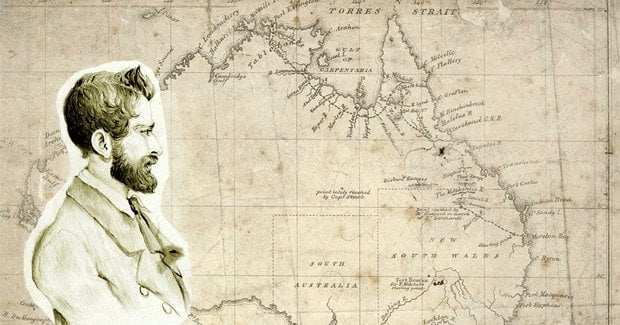A British explorer, navigator, and naturalist, Dampier’s voyages and observations laid the foundation for the scientific study of the natural world. His travels to uncharted territories, meticulous documentation, and contributions to natural history significantly influenced the course of exploration and the understanding of the world. This article delves into the life, expeditions, and lasting legacy of William Dampier, a true pioneer of exploration and natural history.
Born in 1651 in East Coker, England, William Dampier embarked on a life of adventure from an early age. He began his seafaring career in the Royal Navy before venturing into privateering and exploration. Dampier’s experiences in navigating treacherous waters and his innate curiosity about the natural world would shape his remarkable career.
In 1683, Dampier set sail on his first significant voyage aboard the Cygnet. His expedition aimed to exploit the lucrative trade opportunities in the Pacific and Indian Oceans. During this journey, Dampier made landfall on the western coast of Australia, which he named New Holland. His encounters with the Indigenous peoples, including the Nyungar and Bardi communities, provided valuable insights into their cultures and customs.
Dampier’s voyages were marked by his keen observations of the natural world. He meticulously recorded the flora, fauna, and geological formations encountered during his travels. His detailed accounts of the diverse marine life, including descriptions of seashells, corals, and fish, laid the groundwork for the study of natural history. Dampier’s publications, including the acclaimed work A New Voyage Round the World, established him as a significant contributor to the field.
Throughout his explorations, Dampier encountered various Indigenous peoples and explored their lands. His interactions with Indigenous communities, such as the Aurora and Carib tribes in the Caribbean, provided him with a unique perspective on their cultures and ways of life. These experiences influenced his understanding of the natural world and added depth to his writings.
William Dampier’s contributions to exploration and natural history cannot be overstated. His meticulous documentation, including detailed maps, navigational charts, and scientific observations, greatly advanced the understanding of the world. Dampier’s writings influenced subsequent generations of explorers, naturalists, and scientists.
Dampier’s voyages contributed to the expanding knowledge of the world’s geography. His meticulous charting of coastlines, including those of Australia, the Pacific Islands, and the Americas, paved the way for future explorations. The names he bestowed upon landmarks, such as Dampier Strait in Indonesia, continue to honor his legacy.
Dampier’s published works captivated the imagination of readers and had a profound cultural impact. His vivid descriptions of the natural world, the lands he encountered, and the diverse peoples he encountered inspired subsequent generations of explorers and writers. Dampier’s accounts contributed to the broader public interest in exploration and natural history.
Conclusion:
In conclusion, the life and expeditions of William Dampier represent a remarkable contribution to the fields of exploration and natural history. His voyages to uncharted territories, meticulous documentation, and scientific observations laid the foundation for future explorations and significantly influenced the understanding of the natural world. Dampier’s encounters with Indigenous communities provided valuable insights into their cultures, customs, and the diverse ecosystems they inhabited.
Dampier’s legacy is seen in his enduring influence on the fields of geography, cartography, and natural history. His meticulous charts and navigational expertise contributed to the expanding knowledge of the world’s coastlines, including the Australian continent and other parts of the Pacific. The names he bestowed upon landmarks and geographical features continue to honor his contributions and serve as reminders of his remarkable achievements.
Furthermore, Dampier’s literary works, including his acclaimed publication “A New Voyage Round the World,” captivated the imagination of readers and had a profound cultural impact. His vivid descriptions of the natural world and the peoples he encountered inspired subsequent generations of explorers, naturalists, and writers. Dampier’s writings fostered public interest in exploration and contributed to the broader understanding of the natural world.
In conclusion, William Dampier’s expeditions and scientific observations represent a pivotal chapter in the history of exploration and natural history. His meticulous documentation, navigational expertise, and cultural insights shaped our understanding of the natural world and left an enduring legacy. As we reflect on Dampier’s life and achievements, we honor his contributions to the fields of exploration, cartography, and natural history.
References:
- Dampier, William. A New Voyage Round the World. Penguin Classics, 2007.
- Connell, John. Captain William Dampier: Buccaneer Explorer. Canongate Books Ltd, 2001.
- Hamilton, William. The Voyage of William Dampier in the Ship “St George” to New Holland and the East Indies. University of London, 1998.
- Sharpe, Peter. A Man of Distinction: Amongst Buccaneers and Ruffians: The Life of William Dampier. Chiltern Publishing, 2018.
- Temple, Philip. Travels in Various Parts of Peru Including a Year’s Residence in Potosi. J. Mawman, 1830.
- Stannard, David. Piracy and Diplomacy in Seventeenth-Century North America: The Dampier-Hamilton-Newton Papers. University of Florida Press, 1999.
- Williams, Glyndwr. Voyages of Delusion: The Quest for the Northwest Passage. Yale University Press, 2002.


